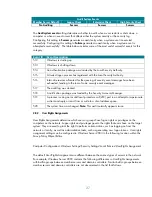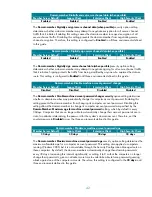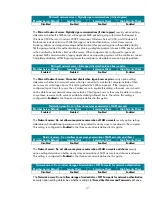
38
Accounts: Guest account status
Member Server Default
Legacy Client
Enterprise Client
High Security Client
Disabled
Disabled
Disabled
Disabled
Important:
Administrators need to check if any of their 3
rd
party applications use and require the
Guest account for communication or functionality purpose. If so, administrators may need to set this
security policy to
Enabled.
The
Accounts: Guest account status
security option setting determines whether the Guest account is
enabled or disabled. This account allows unauthenticated network users to gain access to the system
by logging in as
Guest
. Therefore, this security option setting is configured to
Disabled
in all three
environments.
Accounts: Limit local account use of blank passwords to console logon only
Member Server Default
Legacy Client
Enterprise Client
High Security Client
Enabled
Enabled
Enabled
Enabled
The
Accounts: Limit local account use of blank passwords to console logon only
security option setting
determines whether local accounts that are not password protected can be used to log on from
locations other than the physical computer console. Enabling this setting prevents a local account with
a nonblank password from logging on to a network from a remote client, and local accounts that are
not password protected will only be able to log on physically via the keyboard of the computer.
Therefore, enforce the default value for this countermeasure across all three environments.
Audit: Audit the access of global system objects
Member Server Default
Legacy Client
Enterprise Client
High Security Client
Disabled
Disabled
Disabled
Disabled
The
Audit: Audit the access of global system objects
security option setting audits the access of global
system objects when it is in effect. If both the
Audit: Audit the access of global system objects
and the
Audit object access audit policy
settings are enabled, a large number of audit events will be
generated. This setting is configured to the default in all three environments defined in this guide.
Note:
Changes to the configuration of this security option setting will not take effect until Windows
Server 2003 is restarted.
Audit: Audit the use of Backup and Restore privilege
Member Server Default
Legacy Client
Enterprise Client
High Security Client
Disabled
Disabled
Disabled
Disabled
The
Audit: Audit the use of Backup and Restore privilege
security option setting determines whether
to audit the use of all user privileges, including
Backup and Restore
, when the
Audit privilege use
policy setting is in effect. Enabling this policy could generate a large number of security events,
causing servers to respond slowly and forcing the security event log to record numerous events of
little significance. Therefore, this setting is configured to the default across all three environments.















































